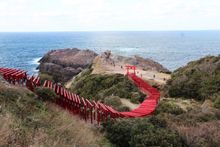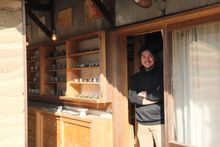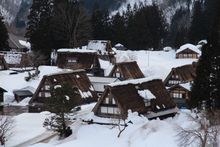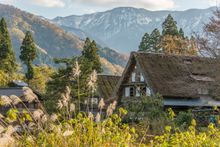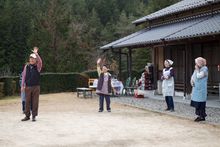 26 Mar 2025
26 Mar 2025
Tags: Japan, Overtourism, Asia, tour operator, Kyoto, tokyo, rural japan

In response to the growing challenges of overtourism in Japan, Inside Travel Group and InsideJapan are launching a new 'under-tourism' initiative – an overtourism strategy aimed at balancing visitor distribution, easing pressure on hotspots, and propelling more sustainable travel.
This year marks the 25th anniversary of InsideJapan offering small group tours and self-guided cultural adventures. Inside Travel Group Co-Founder Simon King reflects on how the landscape of travel to Japan has drastically changed over the past two and a half decades.
“Japan, once a niche destination with just 4 million visitors when InsideJapan started in the year 2000, has seen a 600% increase in tourism, welcoming 36 million visitors in 2024. By 2030, that number is projected to rise to 60 million,” King said.
“While this growth has benefited the Japanese economy significantly, it has also brought inevitable challenges. Over the past two years, overtourism issues have been increasingly captured in the media.
“We know that 80% of travellers visit only 10% of destinations – and we want to change that. There a more people than ever visiting the same small number of places.”
King pointed to the example of Kyoto, where overtourism has led to measures like the banning of tourists from certain parts of the Gion geisha district. Similar issues are occurring in places like Kawaguchiko, where tourists flock to take iconic photos of Mt. Fuji, disturbing local communities in the process.
To address these challenges, InsideJapan is spearheading a new strategic 'under-tourism' initiative aimed at easing the burden of overtourism and managing its impacts. In 2024, the Japan specialists sent travellers to 219 different destinations across all 47 prefectures on self-guided cultural adventures and on small group tours.
“We've helped thousands of people discover Japan over the years, championing a type of travel that goes beneath the surface and immerses visitors in local life and culture,” King said. “With ever-growing visitor numbers, we believe part of the solution to overtourism lies in dispersing travel to lesser-known parts of the country.”
“We have the unique ability to guide our visitors to these regions. This initiative will not only alleviate the pressure the country's most visited sites but will also foster economic growth in underexplored areas. Of course, it is crucial that this dispersal is managed thoughtfully to prevent shifting the problem elsewhere – and that's where our sustainability team comes in.”
Inside Travel Group Global Sustainability Manager Rob Moran said driving visitation to under-visited regions lies at the heart of the under-tourism strategy, with five focus regions selected for 2025.
“The five regions for 2025 are Yamaguchi, Nagasaki, Toyama, Nagoya and Aomori. These locations are spread across the north, central and south of mainland Honshu, as well as the southern island of Kyushu,” Moran said.
“Our strategy considers both carrying capacity, which relates to the physical limits of destinations, and social licence to operate, which takes into account community perceptions, cultural and social impacts, and harmony between visitors and residents.”
InsideJapan has selected it's five regions based on requirement that they are:
- Located outside of Japan's top five prefectures (Tokyo, Osaka, Kyoto, Hokkaido, and Fukuoka).
- Attracting fewer than 10% of visitors (according to government statistics).
- Operating well below their perceived carrying capacity.
- Offering ample room night availability.
- Easily accessible with strong public transport infrastructure.
- Approved and supported by local tourism boards.
- Providing an authentic cultural experience.
Together with local regions and Destination Management Organisations (DMOs), InsideJapan will enhance its product in each of the regions throughout 2025, encouraging travellers to combine one or more of these locations into their cultural adventure trip in Japan.
As part of this initiative, InsideJapan has also reduced the prices of off-peak and shoulder-season Small Group Tours by up to 15% to help disperse visitors both seasonally and geographically.
“This is all part of our wider strategy which includes using our destination insight to suggest alterative districts and offer travel tips together with cultural advice to ensure a better experience all round, in places that are beginning to suffer from overtourism” added Moran.
“This is not only about addressing overtourism; it's about showcasing the uniqueness of Japan's culture through beautiful places and local communities, creating amazing holidays for our clients” King said.
“We ask agents and customers to trust us as Japan travel specialists – we'll take you places you've never heard of and reveal a side of Japan that will become the highlight of your trip. We're confident it will leave you wanting more – just like it did for all of us at InsideJapan.”
A dedicated microsite, highlighting the places and a raft of experiences, will be launched soon. For more information on InsideJapan and to book an off-peak SGT at a reduced price, visit here.
The five undertourism destinations to be introduced are -
Toyama:
A bullet train journey from Tokyo, on the edge of the Japanese Alps and Japan Sea Coast, Toyama is an emerging rural destination. This region is home to unique crafts, traditional buildings, natural beauty and incredible food. The area and communities have invested in a programme of rural regeneration offering unique traditional accommodation, local crafts people have opened their doors, and one district in particular has a street with no less than six Michelin restaurants. Toyama remains off-radar for many but offers quintessential Japan and a slower pace of life.
Nagasaki:
Built on the shores of a natural bay, Nagasaki's rich history as a trading port and the only place in Japan open to the outside world for over 250 years, is reflected in its local culture, atmosphere, and its architecture. This laid-back city is better known for the atomic bomb but offers much more with a rich feudal history and influence from Europe and China. The city sits on the Shimabara peninsula opening the door to traditional farming and fishing communities, is surrounded by traditional hot spring towns and is also the departure point for the island of Gunkanjima – once, one of the most densely populated places on earth but mysteriously abandoned.
Yamaguchi:
This small city was once known as 'Little Kyoto' with Rurikoji temple named as one of the official 'most beautiful temples' in Japan, but Yamaguchi city is the gateway to some beautiful places across the region. The coastal samurai old town of Hagi can still be navigated using its 17th century maps and his home to some of the most prized ceramics in Japan. The traditional hot spring town of Nagato Yumoto Onsen dates back over 600 years, is home to impressive shrines with hundreds of red tori gates and some special traditional ryokan accommodation. A little trickier to reach, makes the Japanese experience that much richer.
Nagoya:
Nagoya has an unfair reputation for being a dull industrial town, but this is an exciting city. Scratch beneath the surface and you'll find it's an art-lover's haven, with scores of galleries featuring local and internationally acclaimed artists. The Aichi Triennale (13th Sept- 30th Nov) arts festival draws well-deserved attention to Nagoya's impressive art scene. July brings the sumo basho tournament in the grounds of Nagoya Castle. The nearby town of Tokoname is a ceramics haven, Inuyama is home to one of Japan's twelve original Edo period castles, and the Nakasendo samurai walking route is nearby. Nagoya is also the Japanese home of InsideJapan.
Aomori:
Aomori sits in the far northern Tohoku region of Japan's main island of Honshu with the Hakkoda mountain range providing its backdrop. Sitting on the coast and on the edge of the mountains, Aomori's markets offer a vast array of produce and some incredible culinary options. The samurai castle town of Hirosaki sits nearby with one of Japan's last few original castles and one of the best-preserved samurai districts in Japan. There are also traditional hot spring towns and one of Japan's most impressive caldera lakes. Most people tend to head south from Tokyo.
ENDS
Interviews with the Co-founders, sustainablity team or head of operations can be arranged - contact James Mundy for more information.
Inside Travel Group is a B Corp Certified global tour operator with two multi-award-winning brands, InsideJapan Tours® and InsideAsia Tours®. InsideJapan Tours was established in 2000 by Co-founders Alastair Donnelly and Simon King and has become the biggest independent Japan travel specialist offering escorted Small Group Tours, self-guided and fully tailored Cultural Adventures. Southeast and East Asia specialist brand, InsideAsia was launched in 2013 specialising in Cultural Adventures across Vietnam, Cambodia, Laos, Thailand, Malaysia, Borneo, Singapore, Hong Kong, and South Korea. Both Inside Travel Group travel brands have won major industry awards for their work and are committed to responsible travel putting the environment, its destinations, and their people first.
